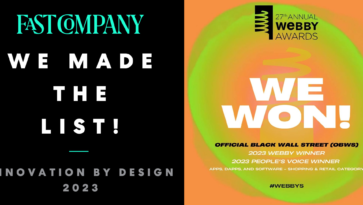This article originally appeared in Business 2 Community on November 18th, 2016
In theory, technology adoption at the enterprise level is all about improving communication, efficiency, and collaboration across an organization. In practice, it often involves a bumpy transition period, some second-guessing, and occasionally disgruntled employees.
The main reason for this is that companies typically take a top-down approach to adopting new technology. Executives will assess high-level business objectives and decide that some new software or platform will make achieving those objectives easier. But if the people who ultimately end up using the technology are unsure of its value, adoption can, in fact, be counterproductive.
Power to the People
As a business leader, if your goals include improved job satisfaction and employee retention, you’ll find that it’s more effective to take a bottom-up approach to adopting new technology.
Observing which tools people in your organization find useful and then operating as an “approver” rather than a “decider” will lead to more seamless implementation across your organization.
Streaming media juggernaut Netflix is an excellent example of a company that has established a culture of innovation and democratized decision-making processes. According to one engineer at Netflix, one major piece of its culture allows for anyone at the company to introduce new technology, provided it adds value and the person bringing on the new technology has a plan for rolling it out, maintaining it, and supporting it.
This kind of democratization of technology selection will not only benefit your employees, but it can also make your business more competitive in several ways. Here are three:
1. You gain quality through quantity. A bottom-up approach to adoption allows for more ideas and input from more people. By listening to your employees, you’ll often discover platforms and technologies you were previously unaware of.
Netflix’s company philosophy has served it well as a content producer, too. Listening to its employees, the company gave Kevin Spacey’s “House of Cards” a two-season deal and complete creative freedom, all without even seeing a pilot first. The series has since become one of the most popular in history.
While giving everyone a voice can sometimes lead to a scenario in which there are “too many cooks in the kitchen,” you will inevitably get more diverse and creative ideas than if platform selection is limited to a select few.
2. You get what you need. The story of Netflix provides a sterling example of the benefits of avoiding a top-down mentality and encouraging discussion and input from all corners of an organization. By involving all “users” in the process, you will get a better, truer representation of what your workforce needs and, thus, be able to make more informed decisions about technological adoption.
While focusing on employee needs rather than business objectives doesn’t necessarily lead directly to innovation, it can often help improve efficiency, communication, and potentially retention. These are all conducive to bottom-line growth.
3. You launch a stronger culture. Involving the full workforce in decisions about technology adoption can encourage creativity and participation within your organization and set the expectation that all voices should — and will — be heard. This type of standard is key to attracting and retaining Millennial workers, in particular, and it can provide a strong foundation on which to build a culture of innovation.
A large part of Netflix’s success can be attributed to its culture of innovation. At Netflix, where only “fully formed adults” are hired, executives trust all employees to bring ideas to the table and to exercise sound judgment. CEO Reed Hastings even made the company’s 124-slide culture deck public, and it has become somewhat of a legend in Silicon Valley. By placing value on the sharing of ideas, you create an environment in which creative solutions to every problem, not just technology selection, are more likely to rise to the top.
Implementing a User-Centric Adoption Process
When it comes to successfully adopting new technologies at the enterprise level, decision-making should be preceded by dialogue. Ask for input from employees, and be sure to listen closely to what they have to say. Show them, through your actions, that their input is not just encouraged but can actually drive change throughout the organization.
Stay open to new platforms and new ways of doing things, and encourage experimentation. Never stifle creativity when a team member clearly has a thread of passion to try something new.
Of course, not all experiments lead to significant change. But even when they don’t, the very exercise of considering numerous perspectives is an incredibly beneficial process — one your employees will appreciate.







